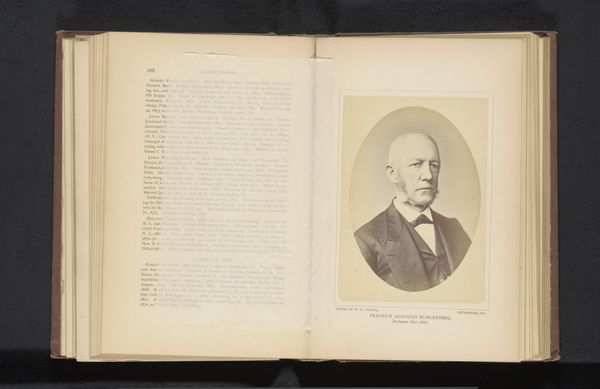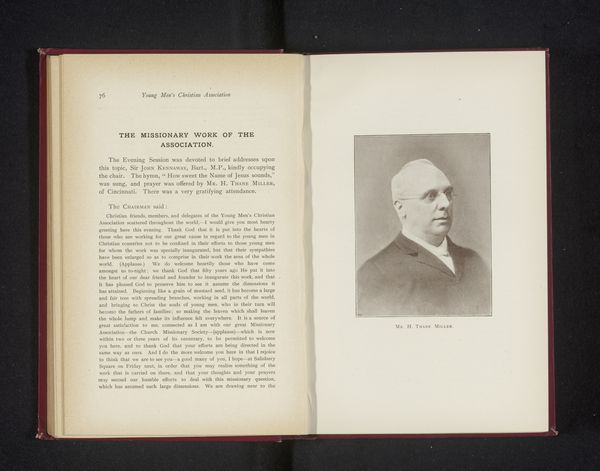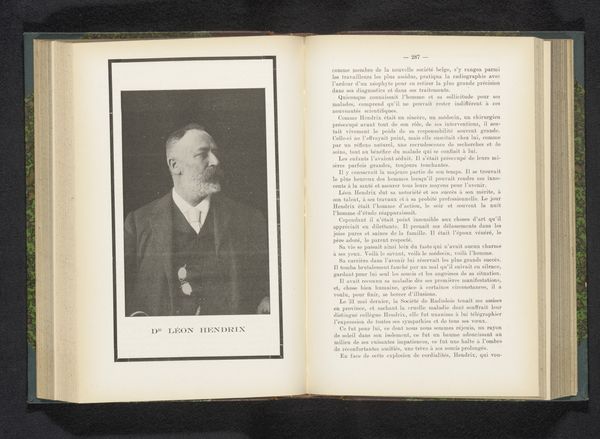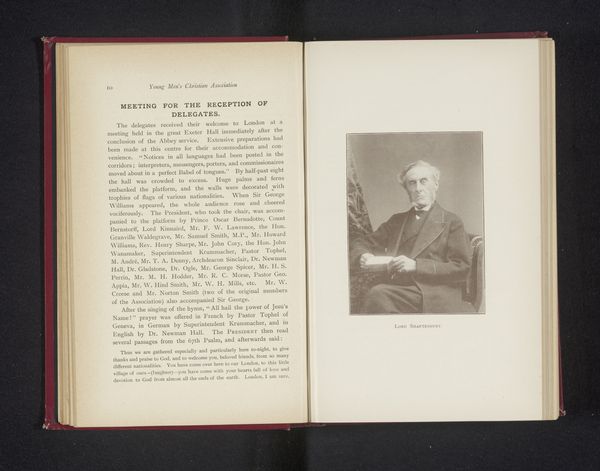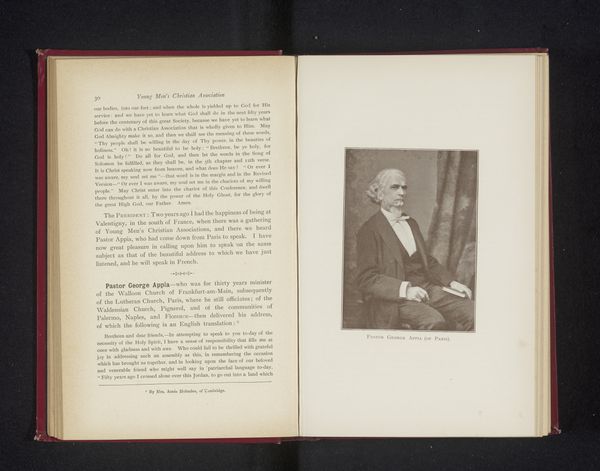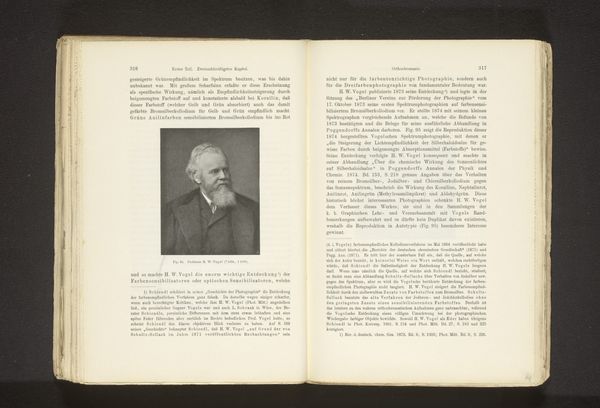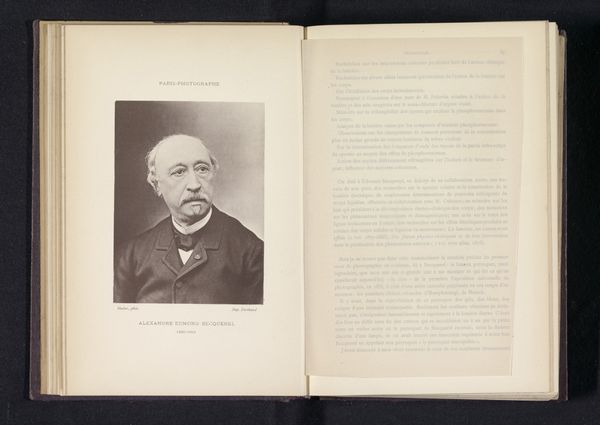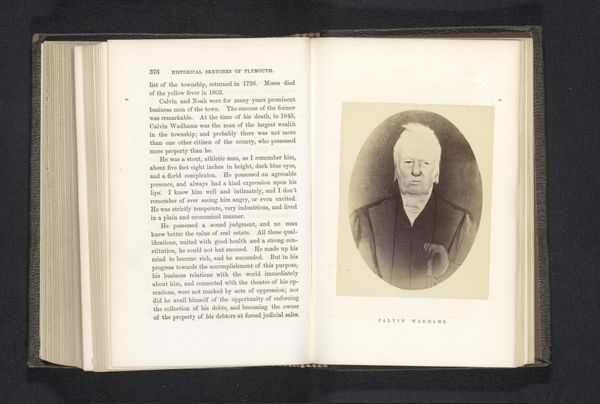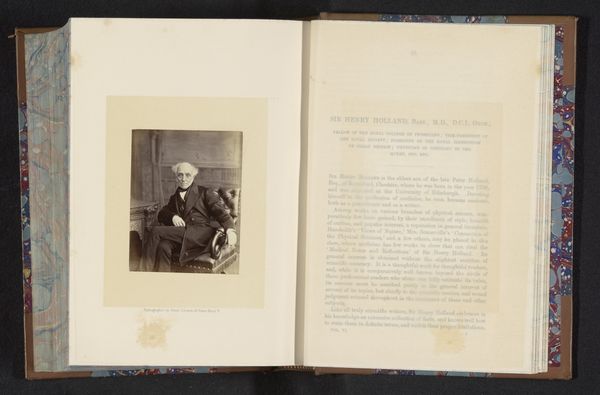
print, photography
# print
#
book
#
photography
#
history-painting
#
realism
Dimensions: height 127 mm, width 91 mm
Copyright: Rijks Museum: Open Domain
Editor: Here we have an interesting artifact: it's a photographic print of M. de Lesseps, appearing in what seems to be an open book. The print is from before 1893, judging by the metadata. It has such a historical, almost academic feel. What are your initial thoughts about this image in its found context? Curator: It's fascinating how the placement within the book impacts its reception. It transforms the photograph from a mere portrait into part of a narrative, embedded within the written word and the larger socio-political context of the time. Do you recognize anything of the subject's legacy in our current world? Editor: M. de Lesseps… wasn’t he involved with the Suez Canal? Does his presence within a book, likely celebrating engineering or colonialism, affect how we perceive him, especially given the canal's impact on global trade and, perhaps, exploitation? Curator: Precisely. The book acts as an institution here, shaping and legitimizing Lesseps’ image. The photographic realism suggests objectivity, yet its inclusion within the book serves a particular narrative—likely one of progress and imperial ambition. Consider how different the perception would be if we saw this image outside this specific framework. Do you think its intended purpose would be revealed as effectively otherwise? Editor: Not necessarily, the context is key. It seems that the book serves to frame and potentially sanitize Lesseps' legacy. Without the text, the image alone doesn't offer as much insight. Curator: Exactly. This interaction shows the book actively participating in the construction and promotion of his image in society. Now, having analyzed it this way, does this print's context impact how you view history's presentation and legacies? Editor: Definitely. Seeing how an image is framed – literally in this case – highlights how constructed history really is. It underscores the importance of questioning the narrative presented to us. Curator: Agreed, these kind of "framed" portraits were ubiquitous during that time. Food for thought.
Comments
No comments
Be the first to comment and join the conversation on the ultimate creative platform.
